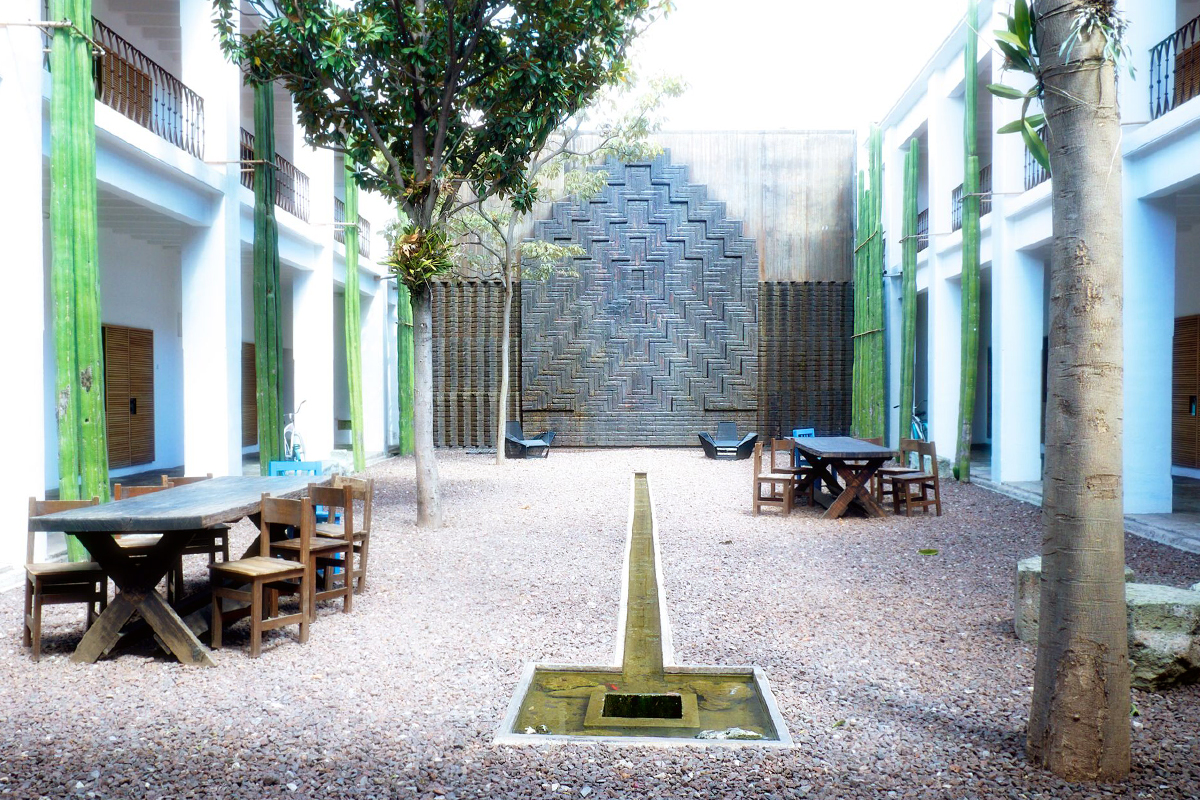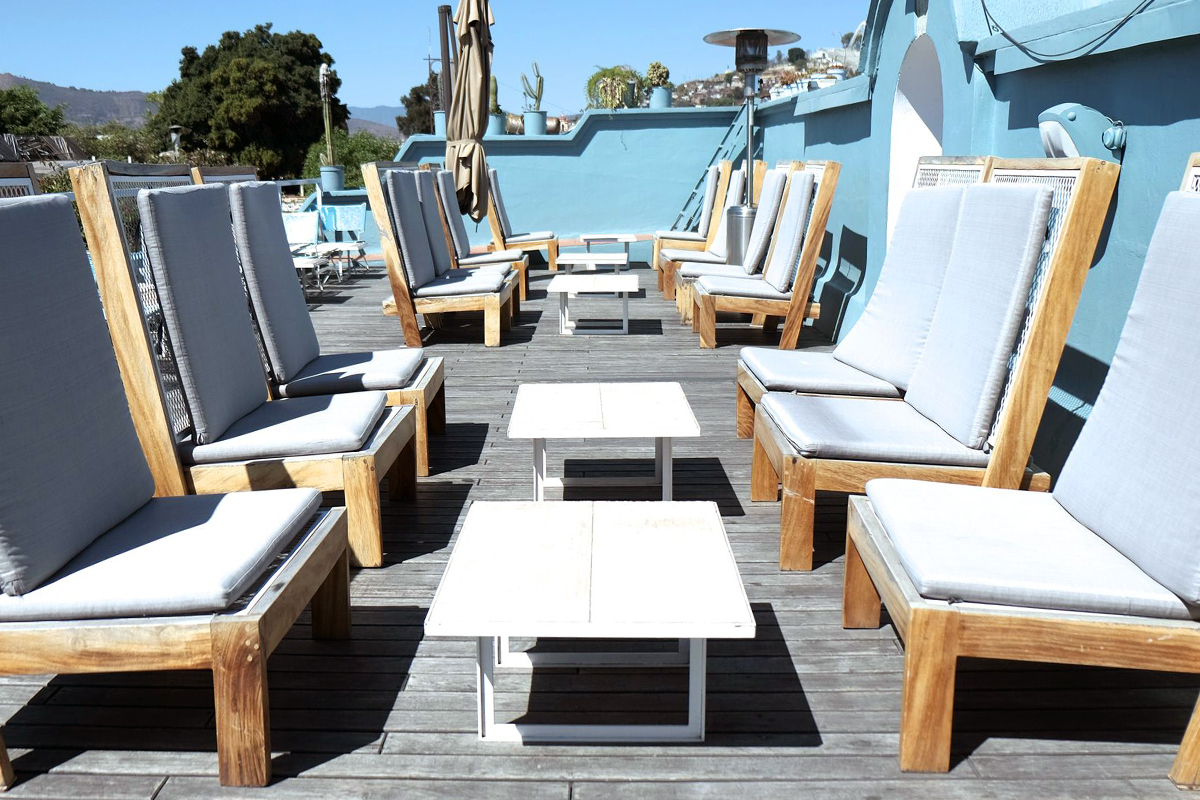Hotel Azul, Oaxaca
A labyrinthian oasis from Mexico’s buzzing, carnivalesque city

by Max La Frenais
When arriving at Oaxaca‘s Hotel Azul, its soft blue facade is lit up by overhanging, fluorescent pink bougainvilleas. It exists as a welcome oasis, away from the buzzing, wired-up carnivalesque city. Constructed in 1874 as a large colonial house, the hotel was a family home and then (from 1940 to 1980) it was transformed into a vecindad—a group of small houses that share a common courtyard. Those who’ve inhabited Azul include shoemakers, seamstresses, doctors, tortilla and tamale sellers, and (apparently) the first man in Oaxaca to drive a garbage truck. Despite its rebirth as a hotel, Azul isn’t glazed over with the impersonal glean of a mega hotel; it’s preserved that warmth which comes when a place has really been lived in.

Saved from demolition in 1992, Azul’s owner spent 15 years transforming the site. Four well-known Oaxacan artists were asked to fill and design the spaces: Maestros Francisco Toledo, Rubén Leyva, José Villalobos and Luis Zárate. Overseeing this project was the prominent interior designer Héctor Esrawe. Their sculptures, paintings and intriguing artifacts abound in the hotel, with each artist allocated a suite to design as well as filling the courtyards, stairways, passages and rooms.

The hotel is divided into two courtyards. From the entrance you pass into the first courtyard where the restaurant’s dining area is situated. Passing from this smaller more intimate area you find yourself emerging from the tunnel-like corridor into the larger courtyard. The first thing you are confronted by is a mural waterfall on the southern facing wall, designed by Francisco Toledo. The space has beautiful Oaxacan trees and cactuses bordering the columns. The cactuses, called órganos (like the shape of church pipe organs), grow skyward and are used by farmers in Oaxaca as a type of organic fences. Zárate also designed the glorious botanical gardens, part of the nearby convent Santo Domingo—another structure saved from becoming a carpark, by the artist community in Oaxaca, led by Toledo.

Each of the 21 rooms (five suites and 16 standard rooms) feels light and spacious, with a hatch-window that opens out to the courtyard. The Toledo-designed mosaics in the bathrooms are equally bright, but there’s a lot going on in each room. Awaiting each guest is a complementary straw hat, azul blue scarf and a traditional Mexican shopping bag. Almost all the decor is produced locally—from the artisanal rugs, made in Teotitlán del Valle, to the bottled water sourced locally from manantiales (mountain springs) by a community in Sierra Juárez (the mountains to the north of Oaxaca city) with all the profits going straight back into their community. There is also the choice of the optional bottle of mezcal sitting alluringly on the table, made exclusively by Koch, a brand that works with Mezcal producers on an ethical basis to protect and serve mezcal producing communities.
Offering breakfast, lunch and dinner Azul endeavors to create dishes fusing traditional culinary flavors with touches of new exciting blends. Adventurous plates such as chile de agua relleno de jaiba (chile de agua stuffed with crab) and lengua con escabeche de frijol (tongue with pickled bean as well as tlayudas) are on offer, along with plenty more.

Hotel Azul unravels itself slowly to its guests; each small corner offers a secret surprise. While exploring, it’s easy to be tempted into a game of hide-and-seek. There’s a cavern-like chapel, a library, and a screening room where the hotel offers a wide range of Mexican art-house films and also hosts the Ambulante and Oaxaca film festivals. As a final surprise, guests can climb up onto the hotel terrace with accompanying bar that boasts a stunning view over the city.
Hotel Azul is located at Mariano Abasolo 313, Centro Histórico, Oaxaca, Mexico, and reservations can be made online.
Images by Leslie Parker












